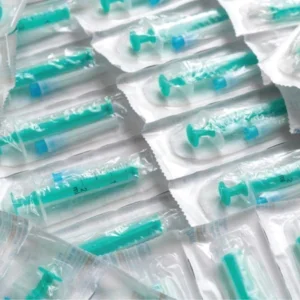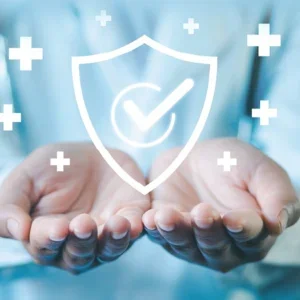The threat of falsified medicines penetrating the European supply chain is growing substantially. According to European Customs statistics, the number of medicines seized at the point of entry into the EU rose threefold between 2006 and 2009 to reach 7.5 million items. In 2010 alone, more than 3.2 million medicines were confiscated, representing over 3% of all items seized at EU borders.
Some EU member states have documented cases of bogus medicines in the legitimate supply chain, while the UK has recently seen counterfeit medicines for serious conditions such as cancer, cardiovascular disease and schizophrenia reaching patients through legitimate channels. Precisely how many falsified medicines have effectively penetrated the supply chain, however, is a matter of conjecture in the absence of an effective tool to prevent their entry.
Falsified Medicines Directive
The adoption on 1 July 2011 of the EU Falsified Medicines Directive (FMD) was an important step towards better protecting patients from counterfeit medicines. The directive introduces mandatory, harmonised pan-European safety features in the form of tamper-evident packaging and a ‘unique identifier’ or serial number that will be applied to all prescription medicines, subject to possible exclusions based on risk assessment. This unique serial number, which will appear on each medicine pack, will enable chemists to check the pack against a central database in real time, alerting them to any risk of counterfeiting.
To ensure maximum effectiveness, it is vital that all medicine packs are verified systematically at the point of dispensing by the pharmacist, whether in a community pharmacy or – where permitted by national legislation – in a legitimate internet pharmacy. This will provide one of the most robust forms of counterfeiting protection available. The European Commission will define the mechanics of how this system will work in delegated acts that are to be adopted by 2014. These acts will define the characteristics and technical specifications of the serial number, which will enable the identification of individual packs and grant national product databases or repositories access to verify each dispensed pack.
The European Federation of Pharmaceutical Industries and Associations (EFPIA) fully supports this legislation and will be pleased to work with the Commission to establish an effective system in the interests of patient safety. Its overriding objective, in common with other stakeholders in the pharmaceutical distribution chain, is to develop a system that provides a high level of security for patients, while being cost-effective and integrable with existing supply chain structures and practices.
Establishing a pan-European product-verification system
To this end, the EFPIA – together with the Groupement International de la Répartition Pharmaceutique (GIRP) and the Pharmaceutical Group of the European Union (PGEU), the respective European organisations of wholesalers and pharmacists at EU level – has proactively initiated a project to identify concrete ways of establishing a cost-effective, scalable, pan-European product-verification system. The aim is that this system will be designed, set up and run on a non-profit basis by the stakeholder organisations that will use it daily.
The project builds extensively on the results of a previous EFPIA pilot, which ran successfully in Sweden from September 2009 to February 2010 in partnership with Swedish retail pharmacy chain Apoteket and local wholesalers Tamro and KD.
Key findings from the pilot were that the availability, ease of use and effective performance of the system allowed the pharmacists to work at a normal pace (the system provided a response to 95% of transactions in under 0.5 seconds), and without any additional effort (the scanning equipment was very positively received). The number of serial numbers that should be present on each pack was another important point; the pilot suggested that having more than one code per pack would cause confusion for the user, potentially jeopardising user acceptance. In terms of the content of the serial numbers, pharmacists expressed high interest in including a machine-readable expiry date and batch number in order to facilitate product recalls, prevent the dispensing of out-of-date medicines and assist stock management.
Harmonious cross-border security
A number of issues are critical to the success of a European product verification system. Such a system must be robust, able to handle many thousands of queries simultaneously and be based on harmonised standards. Fragmentation will limit the ability to verify a product’s provenance and may cause problems in identifying counterfeit products that cross borders.
The EFPIA favours a system based on internationally recognised standards for the identification of products using a 2D barcode that is encoded with a product code, serial number, batch number and expiry date. The verification system proposed by the EFPIA, PGEU and GIRP comprises a European central hub connected to a series of single-country or multicountry data repositories, serving as verification platforms, which pharmacies and other registered parties can use to check a product’s authenticity. The system will be interoperable between the various countries and will allow for the reconciliation of products traded between EU member states (known as parallel-traded products) through the European central hub. In addition, it will also offer countries that do not want to set up their own national system the opportunity to join an existing product verification infrastructure.
Product repackaging loophole
Although there is no suggestion that legitimate parallel traders are responsible for counterfeits, there is evidence of counterfeiters exploiting repackaging as an entry point into the distribution chain. Some of the millions of packs discarded by parallel traders, or the serial numbers printed on them, may be used by counterfeiters, and parallel traders themselves have expressed concerns about the activities of unlicensed traders.
The verification system, therefore, incorporates the FMD requirements regarding the repackaging of products for sale into other EU markets. Where a product is repackaged, the repackager replaces the original serial number in the database with a new one. The original and new packs are electronically linked at the batch level to ensure that the product can be traced in the event of a safety issue or recall. The proposed system should accommodate varying needs in different regions, while being based on common principles to ensure the mandatory, standardised coding and verification of products.
Properly structured, the system is a high-tech and modern way to ensure professional verification of product authenticity at the point of dispensing that will enhance patient safety, and may generate additional future benefits. Potential advantages include possible automated checking of expiry dates, better pharmacovigilance, reduced fraudulent reimbursement claims, more effective prevention of recalled products being supplied to patients, more efficient handling of product returns and improved stock management processes for pharmacies.
Standardised serialisation
The EFPIA-PGEU-GIRP serialisation project is focused on the future, leaving room for adaptation in line with technological advancements to data carrier specifications and verification options. While the immediate objective is to secure the interface with pharmacy-level patients, greater patient involvement will be developed in the longer term when technological and other issues are better understood. The EFPIA is actively following serialisation initiatives beyond the EU, and stands ready to partner with international stakeholders in the establishment of interoperable systems that will secure the pharmaceutical supply chain and safeguard patients.
It is important to note that serialisation can only help to protect the distribution chain against the penetration of counterfeits when it operates alongside measures that clearly and transparently define the roles and responsibilities of all players in the supply chain. If these conditions are not met, serialisation is unlikely to provide robust protection and may give patients a false sense of security.
The EFPIA urges that all serialisation systems under consideration – wherever they are in the world – be based on open international standards. The system that the EFPIA and other stakeholders are developing is highly flexible, and can be adapted to meet any number of serialisation requirements including anti-counterfeiting, verification for reimbursement and pharmacovigilance purposes, and e-pedigree. The introduction of new, incompatible, country-specific solutions hampers the roll-out of technology, increases costs for all players (governments included) and may lead to security loopholes that have been eliminated from tried-and-tested solutions.
Serialisation, whether using the current 2D barcodes or new technology, has the potential to be transformative for pharmaceuticals and healthcare. The EFPIA believes this is only the start of a journey that will radically change the way everyone receives their medicines, and will play a key role in finally locking counterfeiters out of the legitimate supply chain.





